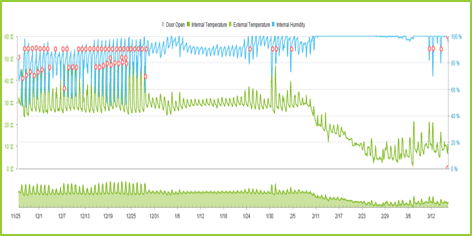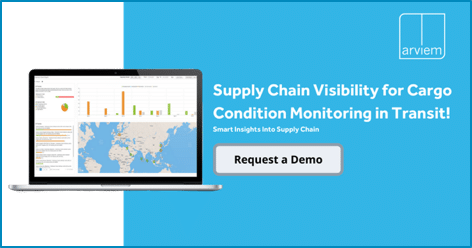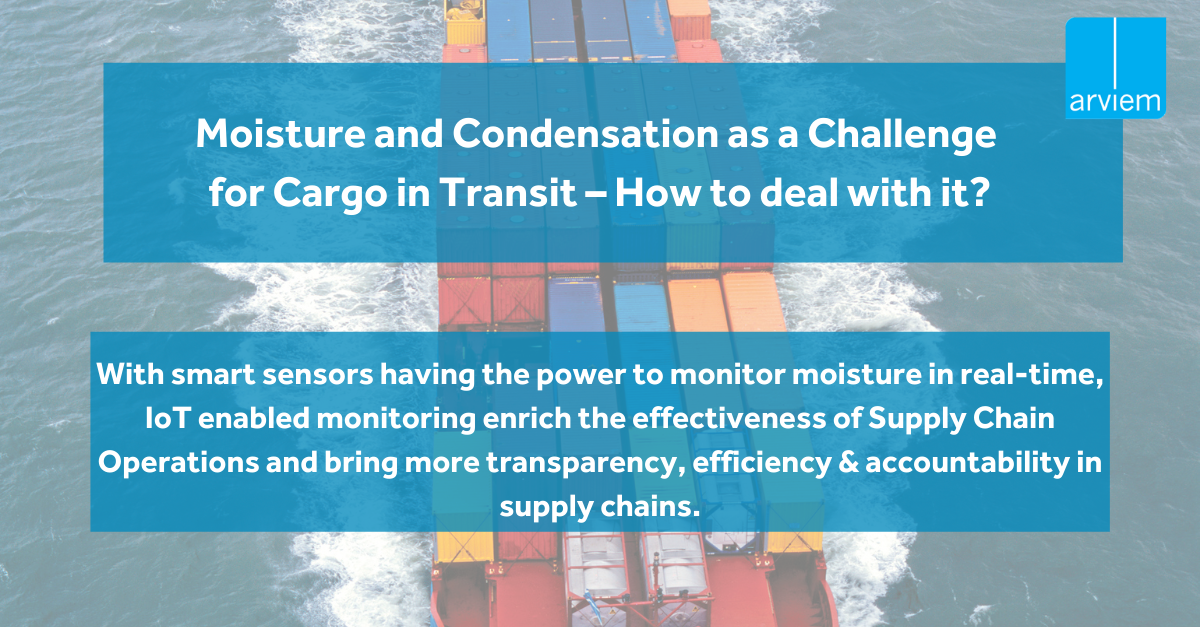Each year, countless tons of cargo is stored and transported across the globe in various shipping containers. With millions of containers carrying trillions worth of goods making their way across the globe’s oceans, shippers, importers, exporters are tasked with safely transporting cargo, ensuring it gets to its final destination undamaged. Unfortunately, companies face hurdles in their transportation efforts managing environmental conditions e.g., condensation, temperature, moisture, safety, security are few to name. One of the main problems shippers from different industries encounter is the damage of cargo in transit by moisture and condensation – especially on those shipments with long transit time. Companies shipping products via overseas cargo containers, railcars, barges, and truck trailers lose millions of dollars every year to excessive condensation build-up, also known as container rain or container sweat. Moisture damage also leads to millions of dollars in losses and has a devastating effect on the business. Did you know that moisture-related damages discard approximately 10% of all containerised goods? This is an incredibly large amount that goes to waste, causing large economic losses and affecting our nature.

To some of the businesses, this might be a small amount. Looking at one consignment only, it may not be the end of the world, but looking at all shipments you do in one year – or ten years – the amount of money you lose sums to a larger amount.
Container Rain and Container Sweat
Container rain and container sweat are caused by changes in temperature, which occur when vessels pass through different climatic zones.
Concerning container rain, condensation occurs on the coldest available surface. When warmer air hits a colder surface (the container ceiling, as warm air rises to the top layer of the container), during fluctuation in a day and night temperatures, the moisture released can be so significant that it will be “raining” from the ceiling of the container. The condensation consequently drips down onto the cargo and causes direct damages.
Container sweat occurs when the container walls are cooled to a temperature lower than the dew point of the air on the inside of the container. Time and relative humidity within the container are prerequisites for the eventual occurrence of container sweat and container rain.
Preventing damage from condensation and moisture in a shipping container
While it’s impossible to prevent moisture build-up completely, there are ways to control condensation in a shipping container, or the damages can be minimized by having the right solution to help proactively manage the losses.
Some of the methods used to prevent condensation and moisture are desiccant bags, blankets, pads, dehumidifiers, and improving isolation or ventilation. The most common practice is to use moisture-absorbing ‘desiccant’ bags to
minimize the risk – but once saturated, they serve no further purpose. Also, the risk is instead the condensation, which will happen depending on the dew point. Desiccant bags may marginally reduce the dew-point-threshold, but they can’t eliminate the risk of Condensation. The Relative humidity of an average shipment can easily vary between 40% and 90%. However, the up and down of the relative humidity is not always relevant and most likely will not affect the cargo as the container is a closed ecosystem. Assuming a temperature of 11.5 °C with a relative humidity of 91% inside the container would lead to a dew point of 10.1 °C. Desiccant bags may reduce the relative humidity inside the container to 89% or 85%, which reduces the dew point only marginally to 9.8 °C and 9.1 °C, respectively. If the outside temperature, however, falls below 9 °C, Condensation will affect cargo quality.
The best way to prevent containerized goods from getting damaged
Real-time condition monitoring of the cargo in transit can help reduce the losses significantly. With a supply chain visibility solution in place, the company can monitor in real-time if a temperature excursion or humidity spike occurs. IoT enabled sensors embedded in the devices along with data analytics performance reporting helps to know
- Routes on which the cargo suffered moisture stress
- Level of moisture cargo exposed on every transit leg
- Door opening alerts that cause a change in moisture levels
- Waiting time at ports, warehouses or customs
- Overview of temperature variation on the entire route

Arviem’s supply chain visibility solution makes it possible to set precise thresholds for environmental conditions and receive alerts if thresholds are exceeded.
Thanks to real-time cargo monitoring, the shipper can be informed immediately when condensation most likely is happening and give a condensation-risk-forecast based on local weather forecast enabling the shipper to make decisions on:
- reposition container
- inspect container
- claims handling
- proactively inform client
With real-time insights, the shipper can determine precisely when and where the damage is occurring. This enables them to tell the difference between a defective product when shipped and a product that experienced in-transit damages. This also helps to pinpoint and eliminate the root cause of product damage. Thanks to real-time updates on disruptions and condition deviations, clients can discover and mitigate supply chain problems before they negatively affect business operations or customer satisfaction. With the historical data or data collected in real-time through cargo monitoring, shippers can know which routes in which season have the risk of container rain and condensation, the product packaging and desiccant use can be adapted accordingly. Companies can use the historical data or data after a damaged container arrives to destination to learn and adapt processes and packaging methods. With the vast amount of data and the management dashboards and performance reports generated by the cargo monitoring service, supply chain professionals are enabled to make data-driven decisions. This helps them optimize their supply and logistics processes, mitigate future risks, reduce insurance premiums, improve working capital management, reduce transport and demurrage cost, reduce administrative costs, and ensure product safety and product quality during transit.




